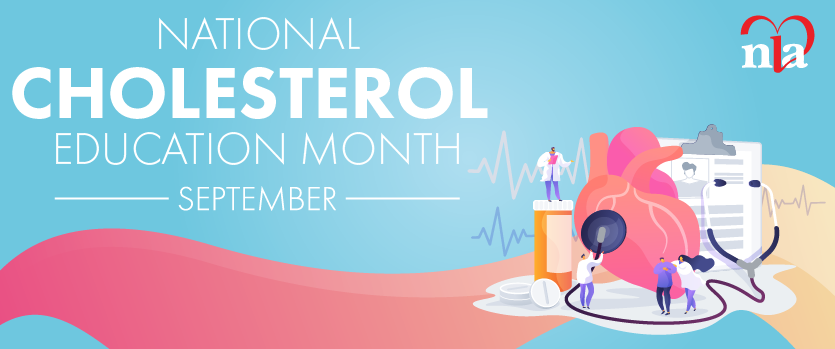A decade ago, the lipid community was eagerly awaiting the completion of Phase III trials of torcetrapib, the first- in-class of the cholesteryl ester transfer protein (CETP) inhibitors. Given the epidemiological assumptions that every 1.0 mg/dL increase in high-density lipoprotein cholesterol (HDL-C) is associated with a 2 percent reduction in cardiovascular events,1 the prospects of torcetrapib increasing HDL-C 106 percent2 led many of us to believe that the eradication of heart disease was near. Unfortunately, that turned out to not be the case. Phase III trials of torcetrapib with atorvastatin either led to no significant difference in cardiovascular outcomes3-5 or increased risk of harm6 versus atorvastatin monotherapy despite large increases in HDL-C (54 to 72 percent) and reductions in low-density lipoprotein cholesterol (LDL-C) ~20 percent. The negative outcomes with torcetrapib may have been the result of the molecule causing an off-target increase in aldosterone through the upregulation of aldosterone synthase.7 This led to increases in blood pressure and increased cardiovascular events.6
After torcetrapib’s failure, the other CETP inhibitors were analyzed and no evidence was found of negative off-target effects, so they proceeded in development. Dalcetrapib was the next CETP inhibitor to go through clinical studies. It had a modest increase in HDL-C (~30 percent) and a non-significant increase in LDL-C (0.1 to 8.7 percent), but no significant difference in cardiovascular outcomes,8-10 which led to the discontinuation of dalcetrapib clinical trials. The reason for the failure of dalcetrapib is not clear, but it may be because of a slight increase in C-reactive protein (+0.2 mg/L) and blood pressure (+0.6 mmHg), minimal effect on LDL-C levels, or weak inhibition of CETP.10-12
The failure of these compounds left the lipid community concerned about the quality of the high-density lipoprotein (HDL) being produced by CETP inhibitors.13 Even though these compounds greatly increased HDL, perhaps the HDL being produced did not increase cholesterol efflux capacity and, therefore, did not enhance reverse cholesterol transport. Cholesterol efflux capacity seems to be mediated through apolipoprotein A1 (apo A1) binding to ATP- binding cassette transporter A1 (ABCA1) in the macrophages whereby apo A1 collects free cholesterol from the macrophage to become pre-β HDL and, subsequently, HDL particles.14,15 Thus, efflux is associated with the amount of pre-β HDL.14 In vitro studies assessing the effects of various CETP inhibitors on pre-β HDL noted that both torcetrapib and anacetrapib reduced pre-β HDL while dalcetrapib had no effect.16 These effects may explain why torcetrapib and dalcetrapib trials failed to show an anti-atherogenic effect.
Anacetrapib trials are ongoing. Despite in vitro studies demonstrating that anacetrapib decreased pre-β HDL, an in vivo hamster model demonstrated that treatment with anacetrapib increased the levels of pre-β HDL.17 Anacetrapib has a greater inhibition of CETP activity than its predecessors and no significant differences in blood pressure have been noted.18 Because of the negative outcomes of the torcetrapib trials, anacetrapib 100 mg daily versus placebo was studied in 1,623 patients on statin therapy with coronary heart disease (CHD) or CHD risk equivalents and LDL-C <100 mg/dL.19 After 18 months, anacetrapib 100 mg, on top of statin therapy, significantly increased HDL-C by 138 percent, significantly decreased LDL-C by 40 percent, and significantly decreased lipoprotein(a) by 39 percent versus placebo.19 Additionally, no difference in cardiovascular events between the two groups was seen, giving confidence that anacetrapib will not be associated with an increased risk for negative cardiovascular outcomes. Phase III trials with anacetrapib are now under way to determine their true long-term effects on morbidity and mortality.
Evacetrapib is another CETP inhibitor now undergoing Phase III trials. In a Phase II study,20 evacetrapib monotherapy (30 mg/day, 100 mg/day or 500 mg/day) was compared to statin monotherapy (simvastatin 40 mg/day, atorvastatin 20 mg/day or rosuvastatin 10 mg/day), a combination of evacetrapib 100 mg/day with any of the previously mentioned statins, or placebo. Evacetrapib monotherapy versus placebo significantly increased HDL-C up to 132 percent and significantly decreased LDL-C up to 40 percent. On top of statin therapy, evacetrapib versus placebo significantly increased HDL-C up to 89 percent and significantly decreased LDL-C up to 14 percent.20 In a 2014 abstract of the same data set,21 evacetrapib monotherapy and evacetrapib plus statin therapy significantly increased cholesterol efflux and pre-β HDL versus statins alone. Thus, evacetrapib in a human model has shown the ability to promote cholesterol efflux, so perhaps there is hope that the outcome of the Phase III trials will demonstrate reduced cardiovascular outcomes. (Author’s note: Before this article went to print, the manufacturer of evacetrapib released a memorandum announcing the cessation of evacetrapib trials due to no evidence of benefit).22
The latest CETP inhibitor to undergo a Phase II trial is TA-8995. This new agent has been studied in a trial that randomized patients to TA-8995 (1 mg/day, 2.5 mg/ day, 5 mg/day, or 10 mg/day), TA-8995 10 mg/day plus statin (atorvastatin 10 mg/day, atorvastatin 20 mg/day, or rosuvastatin 10 mg/day), or placebo. TA-8995 monotherapy significantly increased HDL-C up to 179 percent and significantly decreased LDL-C up to 45 percent versus placebo, and TA-8995 in combination with statin significantly increased HDL-C up to 158 percent and significantly decreased LDL-C up to 68 percent versus placebo.23
Early CETP inhibitors most likely failed because of toxic off-target effects or weak CETP inhibition. Newer CETP inhibitors now undergoing Phase II and III trials are stronger inhibitors of CETP and do not have off-target effects. It remains to be seen if inhibition of CETP will produce benefits to cardiovascular morbidity and mortality, but we should have some compelling answers in the next few years.
Disclosure statement: Dr. Gupta has no disclosures to report.
References are listed on page 36 of the PDF.





.jpg)
.png)











